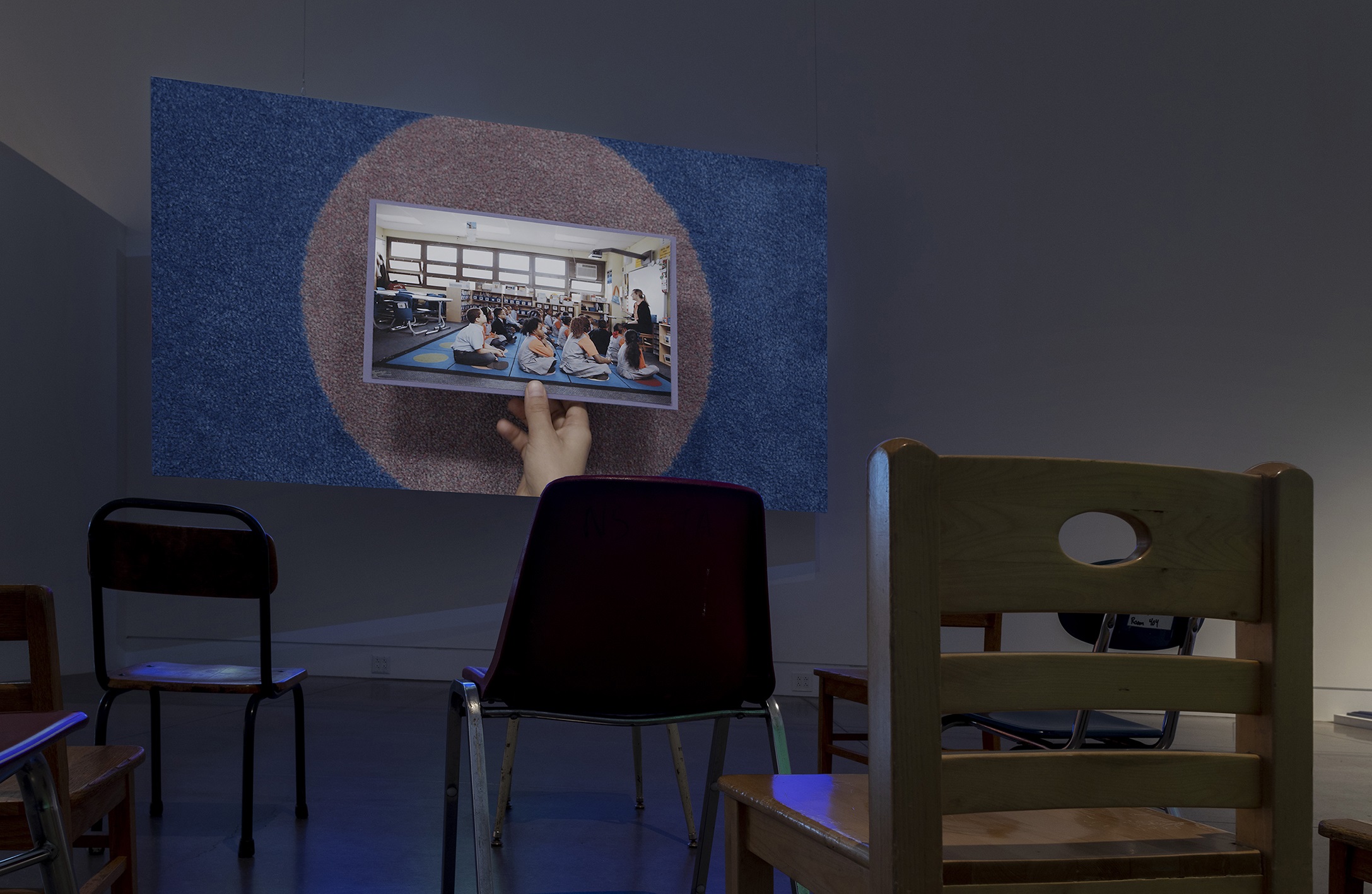Strategies that Foster a Formless Space
08/14/2023
by Diana Rangel
Assuming different roles and enunciative instances, artist-psychologist Diana Rangel (Caracas, Venezuela, 1987) addresses the relationship between art and mental health. Her work proposes a reflection on pedagogical processes in which the subjective construction and the search for individuation are configured among archives, encounters, and shared stories, with listening as a fundamental strategy.
Education
Schooling
A few years ago, I was finishing my major in Dynamic Clinical Psychology, and I came up with an idea for a thesis that would use qualitative and pedagogical research methods. It would also employ artistic resources (such as photography, video, narrative, and so on) to access a complex topic for the city of Caracas: the subjective construction of violence.
I worked for a year in an area of Caracas called Petare, considered the second most populated slum in Latin America and the first in terms of crime and violent deaths. Hand in hand with a gang of young delinquents, I was able to complete a research thesis that allowed me to obtain a degree as a psychologist. It also opened the doors to numerous projects that today—almost eight years later—I continue working on in various disciplines. Voces de un lugar imposible [Voices from an impossible place] opened the gates to a multidisciplinary way of working that still accompanies me.
After the thesis, the possibilities for exploring, diversifying, and deepening the project favored two complementary ideas: the first was to discover the power of art and pedagogy to access diverse communities and reach a fruitful exchange of subjectivities, which will always result in transformation. The second implied integrating the experience—registered in photographs, diaries, chronicles, and videos—into a proposal that could access other fields of dissemination and would, in a way, respond to the sphere of art.
This initial experience in Venezuela led me to study contemporary photography at the International Center of Photography in New York. There, I later worked as a teaching assistant for two professors in the MFA program at Bard University: Jean Marie Casparian and Susan Jahoda. They opened my eyes to the world of social and participatory practices and encouraged me to continue my studies at The European Graduate School in Switzerland. There, my way of seeing my psychological practice changed, and I understood that what I was doing was also art.
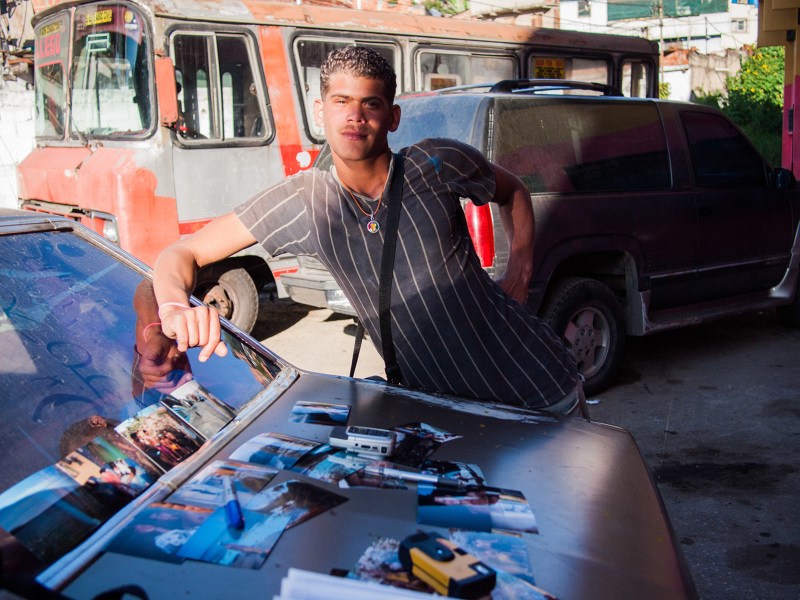

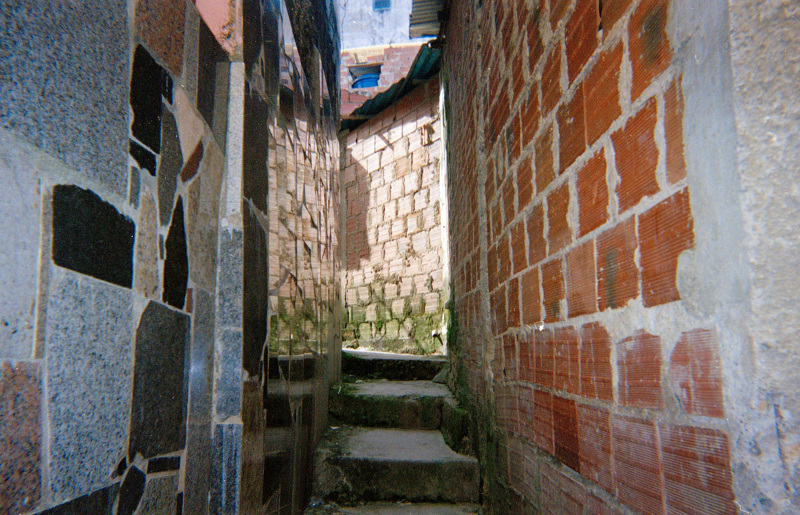

Teaching
From the pedagogical practice, I have learned the importance of understanding it as a relationship, using this word in its widest possible complexity. A relationship with another is not determined by goals to be achieved or established schedules; it is not based on production logic. A relationship, most of the time, does not fulfill a specific function; its raison d'être appears later in the process.
In my projects, art operates as a device that allows working through words. This facilitates the creation of a safe and personal space that promotes speaking and listening. In this place, an exchange of subjectivities and an individuation process occurs. The presence of play as a proposal for a new place is also important, whose rules arise in a given moment and space.
Play, for me, is directly linked to the creative process, the artistic work, and its language. But it is worthwhile to go deeper into all these terms: listening, subjectivity, the process of individuation, and play. To know from where I speak.
I believe all work of a social nature, being susceptible to the exchange of subjectivities, potentially entails two processes that can happen simultaneously. As Lacan and even Freire sustain: "Man becomes man by being a speaker and spoken at." When speaking to an Other (external to one’s reality, an Other who does not reaffirm what is being said but instead differs, or remains silent, listening) about the subjective construction of a reality represented in the artistic manifestation, in the word, this reality is called into question, as it is not reflected or reaffirmed in the other who is listening. Therein, some aspects are reconfigured, either taken or left, and something is symbolically reconstructed.
The second process is the exercise of freedom and emancipation. By seeing themselves in a creative and constructive activity, the boys from Petare discovered themselves doing something different, away from weapons but feeling the same satisfaction of desire and the sense of freedom that being part of a criminal gang can bring. Thus, many of the participants found themselves with the capacity to do something else. And although the purpose of the research was not exactly to change their lifestyle, they all tried, and two out of five succeeded.
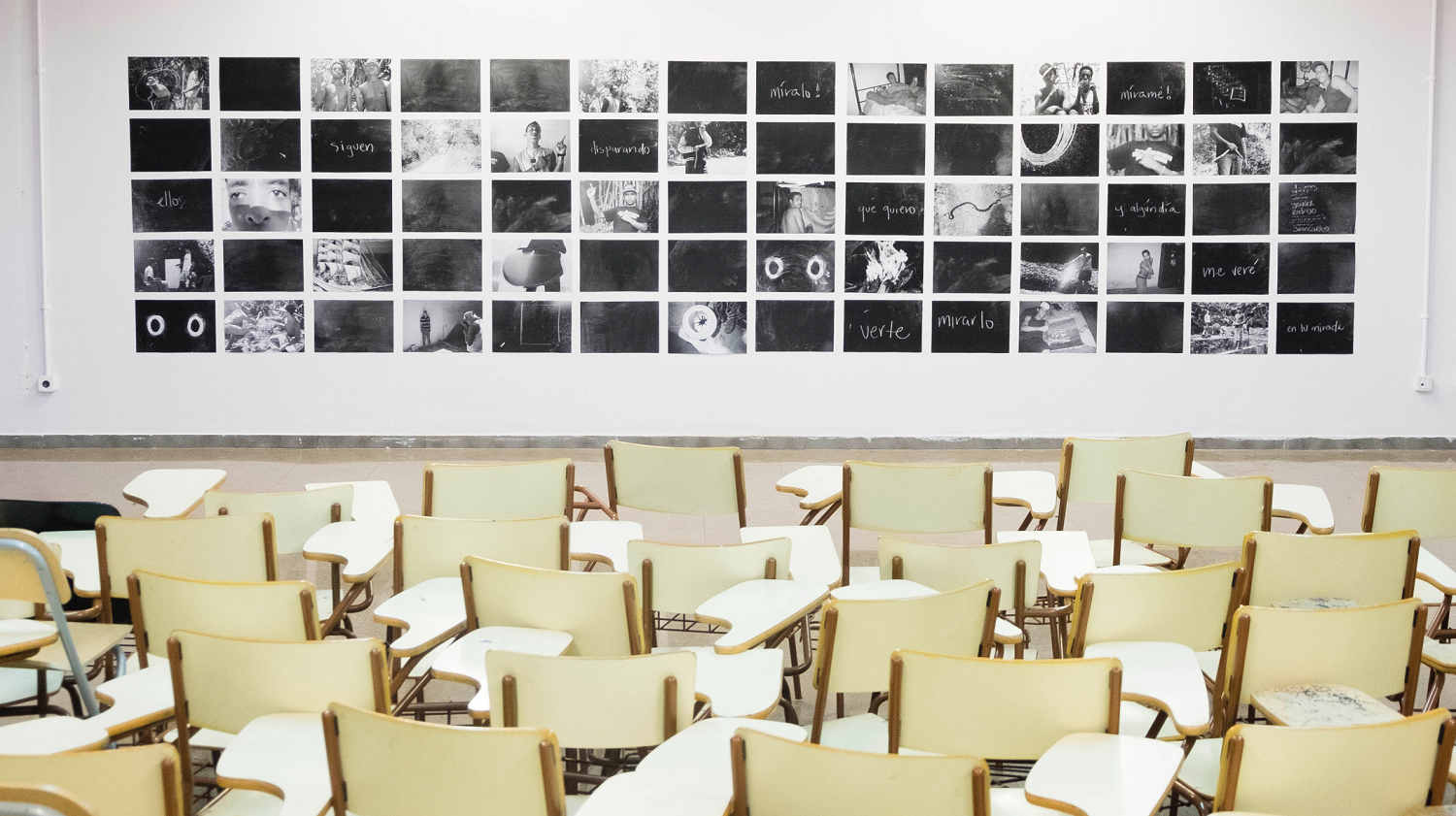
In all the art experiences I have done, I have always gratefully celebrated the importance of listening. In Voices from an impossible place, the participants responded to listening and, as they looked at their own photographs, they put words to aspects of their lives that had remained silent, cut off from affection. In Alcatraz, the process was a constant back-and-forth of exchanges and rewritings of one's own identity. In The Ultimate Guide for the Immigrant in Minnesota, listening became a performative act accompanied by street actions.
Nicolas Bourriaud says in Relational Aesthetics that the process of singularization/individuation consists precisely in integrating these signifiers into personal "existential territories," as tools that serve to invent new relationships "with the body, the ghost, time passing, the 'mysteries' of life and death." These existential territories would also help resist the standardization of thoughts and behaviors.
And now I ask myself, is this not also an artistic proposal?
Processes
Beginnings
The idea that sets a project in motion always comes from a situation experienced in the circumstances I am going through; I do not look for it, it arises as a problem, a dilemma, a question to be answered. To be able to see these ideas, one must be available to receive them, know how to listen to the environment and detect the potentialities already within it.
Questions
My projects are constructed and deconstructed as they progress. Because of this, it is very difficult for me to coordinate with an institution that seeks a plan with immediate and visible results in the short term. The biggest challenge has always been integrating error, doubt, and contingency as positive aspects within art and education projects. I always try to talk about this from the angle that its foundation is human relationships, and human relationships do not work with specific goals and closed schedules.
Strategies
Simply put, you start with a void. From my perspective, I must become a sounding board in order to have enough space to listen and to have what I receive resonate within me. Listening is the essential methodological element for the beginning of a project. From there, the needs, problems, questions, clashes, and contradictions that exist in a group, a classroom, or an institution are detected.
The next strategy is choosing the medium to work with; for this, I consider whether or not it is important to make it visible. Depending on the needs, problems, and questions, the actions to be taken and the working methodology are determined. Augusto Boal maintains that one should work with the potential of the environment, not bring anything to the place but rather work with what one has, with what we find as a resource: be it human, environmental, material, historical, etc.
Emptiness, silence, observation, and listening are strategies that foster a formless space. This does not imply dispersion or lack of responsibility, because a formless space has a base structure that must be sustained over time. This is, from my perspective, the most complex process a teaching artist can do since we are in an era where concrete form, measured time, and controlled spaces are what is welcomed.
Procedures
Each project, group, school, or institution is different; each has its own circumstances, and those are the ones that determine the technical, creative, corporal, and psychological procedures to be implemented. But coming "empty" to the classroom does not mean I do not bring a suitcase full of resources: previous experiences, successful methodologies, triggering questions, and fertile movements with which I usually work.
Listening - Word - Body - Play
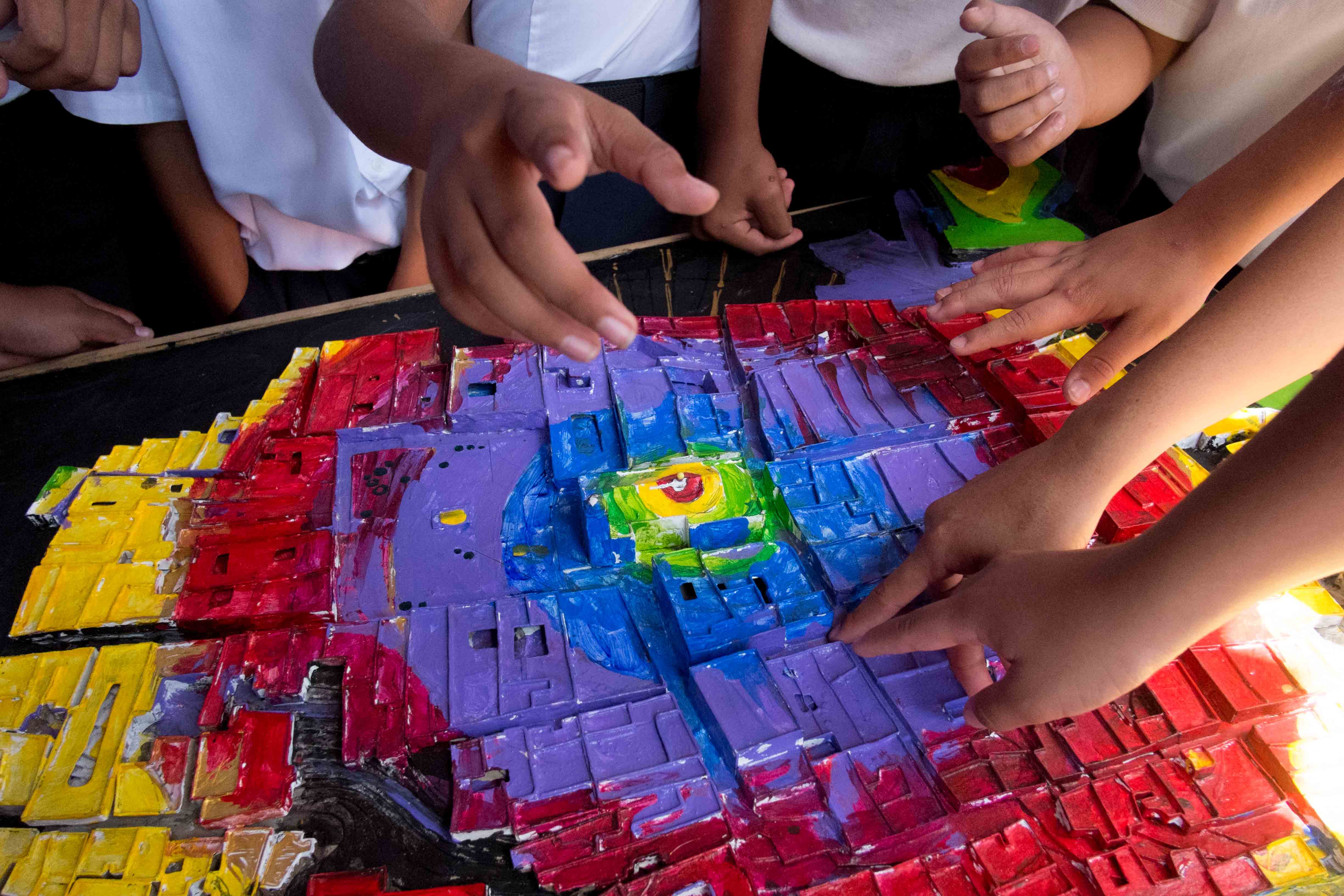
I think of listening as a fertile ground to explore the questioning of education as a work of art. To think of the act of listening as a learning mechanism, as a meeting point, as an empty space between two possibilities or two phenomena. Listening may well be posed as an aesthetic and a political practice. I have chosen to investigate this practice because, away from the visual image, it places us in other modes of sensory perception and can easily transport us to another place. In my experience, listening has been a very powerful way of being in the contemporary present—understanding the contemporary present as that which is here and there at once, the multidimensional, the deferred present.
Without listening, there is no community. A community is a collection of listeners, according to Byun Chul Han. The political space is a space where I meet with others, talk to others, and listen to them. Is the art space a space of listening? Should it be? I think it should be. Listening is a process that will always be active, not passive. An act implicates people (and itself) with others. I always prefer to use the word 'implication' rather than 'participation,’ which is one of the lessons of philosopher Marina Garcés on the politics of participation and pedagogy in creative processes.
Implication means engaging the body; this implies giving oneself to the Other. In doing so, we enter the dimension of time, since it requires one's dedication and disposition to lend some of our time to listen; namely, "the time of the other." Everything happens in the time of the other: the emptying of the listener and, at the same time, the speaker is immersed in that resonance box. Listening proposes a new space to be, and that space is shaped as a resistance to the distancing we live in today.
Dialogues
I do not involve people, people have always been there, relating to one another. This is how I approach projects and see myself as part of a mechanism. I consider a lot the historical memory of the place in regard to my own. What is it in me that makes me be here? What is it in this place, or in these people, that unites us? Commonalities, dissonances. It may all sound a bit mystical, but instruction manuals and standardized methodologies are not my forte. I prioritize intuition and commitment; I think through bonds, and I create from that place.
Works and Projects
In Progress
I am currently delving into themes that come from two places: from my condition as a migrant and as an artist-psychologist. As I migrated, the expanded listening, the voice, and walking as aesthetic practices became fundamental to my searches and bonding with the environment. Because of this, in 2020, I developed a space called Voz en Tránsito, which began as a virtual work of five months with a group of migrants from nine countries and ended up being a film divided into nine fragments. From then on, Voz en Tránsito has been my space to investigate these issues on a group and individual level. Over the last three years, I have developed virtual workshops based on psychogeography and voice practices. I am currently working with a group of women who were victims of political persecution and were confined in the military prison of El Helicoide, in Caracas.
2021 saw the birth of TRAMA: Community Learning Laboratory, through the Santa Mònica Art Center residency grant, which I am currently developing. It is a space designed to propose playful and transversal ways for critical reflection on the problems that are at stake at the local level. It is inspired by the early American feminist practices of the 'Self-Awareness Groups'. This was a term coined by Kathie Sarachild, who, in 1967, in the framework of the New York Radical Women, defined this practice as an "awakening of latent consciousness" through narrating one's own experience.
Also in this residency, I am conducting a two-year research on the discomforts of cultural workers. Following the footsteps of Francesc Tosquelles on how to "cure institutions," I problematize my role as a psychologist in an art center as an artistic and critical proposal.
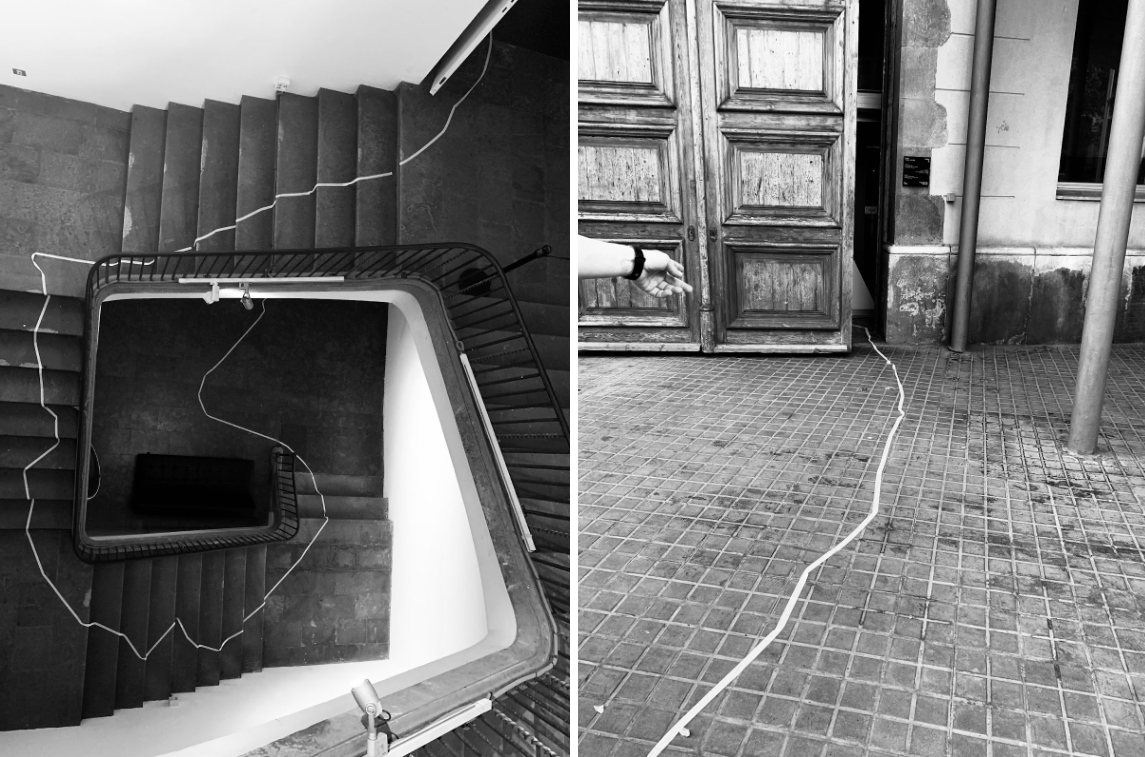

In Retrospect
The fact that I started my work as a clinical psychologist in a Venezuelan slum has determined my practice. Today, I have approached people like Francesc Tosquelles, Félix Guattari, Fernand Deligny, Suely Rolnik, among others, and I confirm that my searches and insistences were on the right track. These figures investigate and insist on the integration of transversal and multidisciplinary practices, of culture in life, expression, and care for one's own body and that of the other as essential axes to be able to live and, above all, to accompany each other in living.
Contexts
Talking about context in a flat world is becoming increasingly difficult for me. In my projects, I prefer to talk about subjective constructions, personal stories, memory landscapes, or psychic reality, understanding that these particular singularities (always unique) will be in dialogue with the territory we walk on, its laws, and policies. All creative processes are political, and the lines between public and private are as thin as a chalk line drawn in a classroom.
I consider the idea of what is public to be subjective: it depends on the group and the nature of the project in which it is at work. In recent works with women who were victims of male violence, we delved into the idea of the public. For them, being touched by a stranger in a learning space is already being in a public space. On the contrary, for a group of young active delinquents, appearing on camera and talking about their crimes and decisions was a necessary process for them.
In my personal practice, however, I seek to expose that which is private in my life in public, or at least to problematize it, since this is precisely the opposite of what a psychologist would do: to expose herself.
